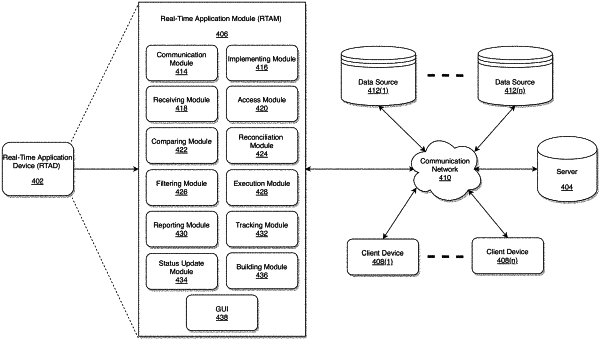| CPC G06Q 40/02 (2013.01) [G06Q 20/108 (2013.01); G06Q 40/06 (2013.01)] | 14 Claims |

|
1. A method for accessing data by utilizing one or more processors and one or more memories, the method comprising:
providing a plurality of data sources each including various data corresponding to a user's account held and managed by an institution;
implementing API (Application Programming Interface) connectivity to connect a user's system of choice to each of the plurality of data sources by building applications on API technology such that the user can access the same type of data as if the user were logging in to a system managed and operated by the institution; running the applications within an ERP (Enterprise Resource Planning) solution system of the user's system of choice; and implementing the API connectivity to access data from the plurality of data sources in real time;
receiving user's login data associated with the user's account from the user's system of choice;
accessing data corresponding to the user's account in real time from the plurality of data sources via the API connectivity based on verification of the user's login data;
displaying the data in real time onto a graphical user interface (GUI) of the user's system of choice;
accessing the plurality of data sources to report bank account balance data and bank transaction history data associated with the user's account onto the GUI based on verification of the received user's login data;
comparing the bank account balance data and the bank transaction history data with the user's corresponding ERP balance data and ERP transaction history data, respectively; and
reconciling, based on comparing, any differences between the bank account balance data and the ERP balance data and between the bank transaction history data and the ERP transaction history data.
|